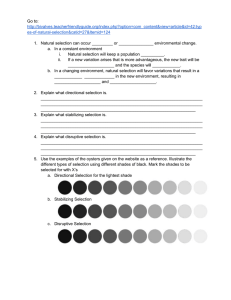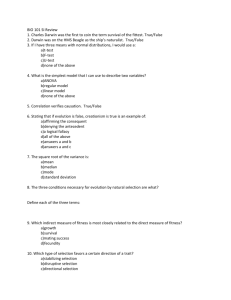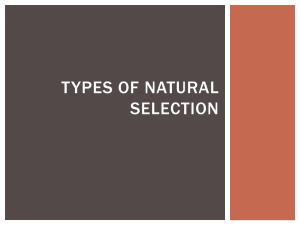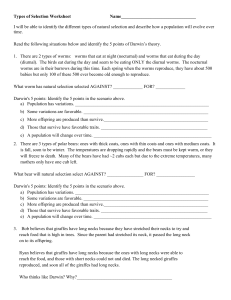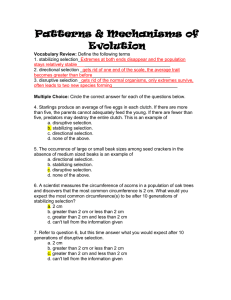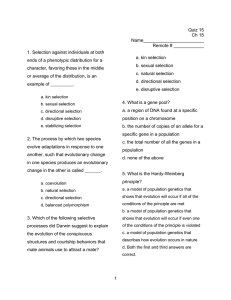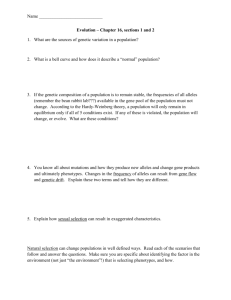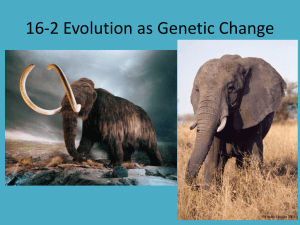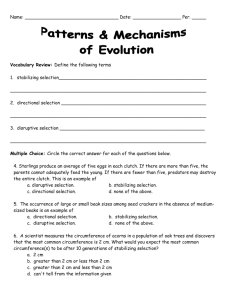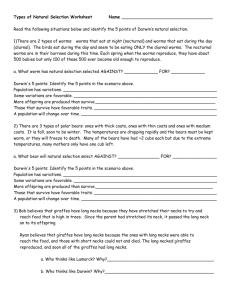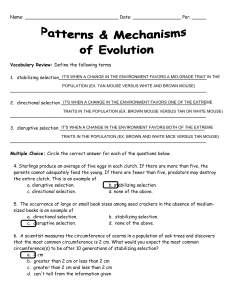Types of Natural Selection What type of phenotype is selected
advertisement
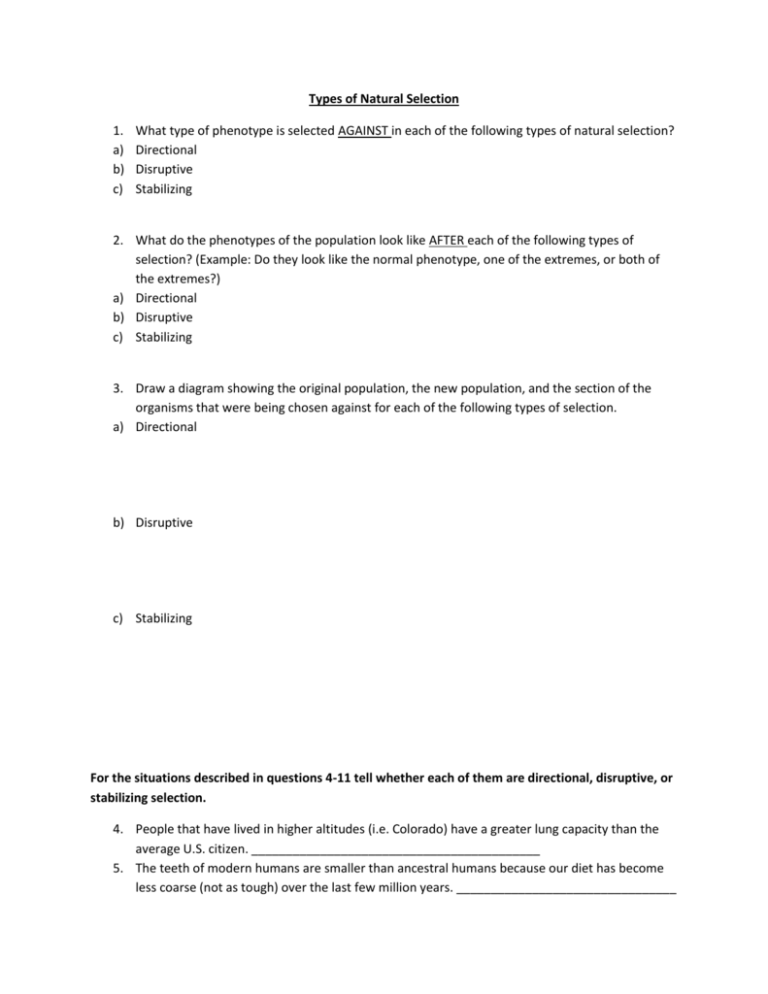
Types of Natural Selection 1. a) b) c) What type of phenotype is selected AGAINST in each of the following types of natural selection? Directional Disruptive Stabilizing 2. What do the phenotypes of the population look like AFTER each of the following types of selection? (Example: Do they look like the normal phenotype, one of the extremes, or both of the extremes?) a) Directional b) Disruptive c) Stabilizing 3. Draw a diagram showing the original population, the new population, and the section of the organisms that were being chosen against for each of the following types of selection. a) Directional b) Disruptive c) Stabilizing For the situations described in questions 4-11 tell whether each of them are directional, disruptive, or stabilizing selection. 4. People that have lived in higher altitudes (i.e. Colorado) have a greater lung capacity than the average U.S. citizen. __________________________________________ 5. The teeth of modern humans are smaller than ancestral humans because our diet has become less coarse (not as tough) over the last few million years. ________________________________ 6. Charles Darwin observed many different species of Finches on the Galapagos Islands. On each of these different islands, Darwin noticed that the Finch species had very different beaks. There were no “average” sized beaks; rather, they were each specialized for the food on their particular island. _____________________________________________ 7. There is a very high incidence of infant mortality for very heavy as well as very light babies. ____ ____________________________ 8. Coho salmon are either very large or very small due to the fact that these respective sizes both pose reproductive benefits. There are very few “normal” sized coho salmon. ______________ _______________________________ 9. In ancient humans, very small men might not be very attractive to women because they can't defend their family as well but large men might have a more difficult time finding enough food. Very large men would tend to be slower and have less endurance. ________________________ 10. Giraffes fight for their mates by swinging their long necks and hitting each other with their heads. This has caused their neck to become longer over time because giraffes with longer necks can swing their necks faster (and thus win the fights for the mate). ________________________ 11. Remember the incidence of peppered moths. White moths had previously been more reproductively successful due to the fact that they blend in with the lichen on the trees. With the recent rise in pollution, the black moths now have more reproductive success because they blend in with trees blackened from pollution. _________________________________________ 12. Dog breeding could be considered disruptive selection because breeders intentionally breed dogs that show extreme phenotypes. Even so, the fact that this form of selection is not natural (it is caused by humans forcing it to happen) means that it is actually what kind of selection? (Hint: It is not directional, disruptive, or stabilizing)
